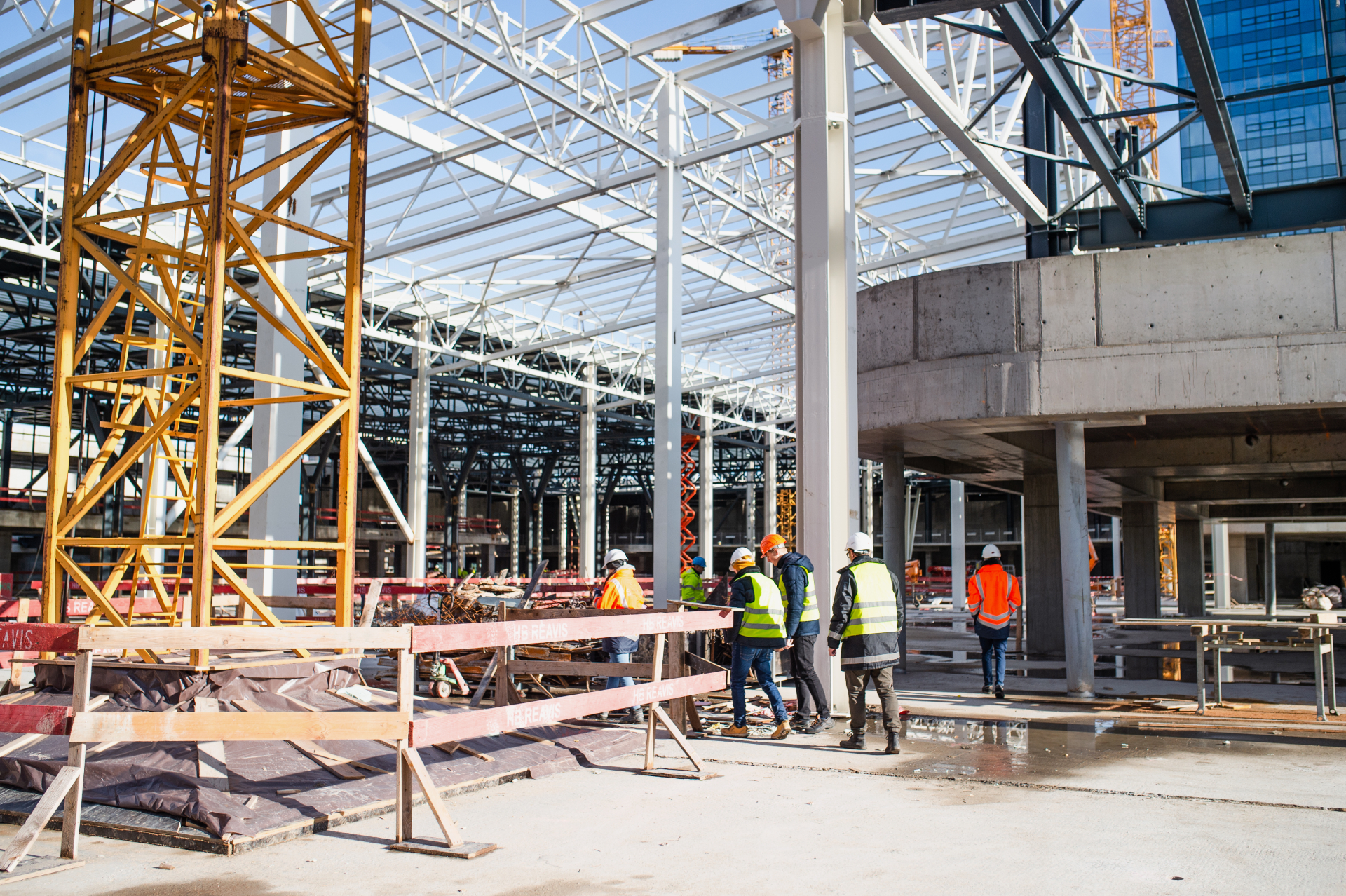
When planning a commercial construction project, choosing between steel and concrete for the structure is a pivotal decision. Both materials offer distinct advantages, and the right choice depends on factors such as budget, project timeline, and structural requirements.
In this blog article, our experts at RD Fast Construction dive into the cost, time, and quality considerations for steel and concrete structures, helping you make an informed decision for your project.
The Costs of Steel vs Concrete Structure
Cost is often the first consideration in commercial construction. Steel and concrete each have unique cost profiles, influencing both short-term and long-term expenses.
What are the Costs of Building Steel Structures?
Steel is often seen as a cost-effective choice for commercial construction, particularly for mid-rise and high-rise buildings. While the upfront cost of steel may be higher than concrete, it can result in long-term savings due to reduced construction time and lower labor costs. The most prominent costs of steel structures include:
- Material Costs: Steel prices can fluctuate based on market conditions, which might impact overall project budgets.
- Labor Costs: Steel structures typically require specialized labor for fabrication and assembly, which can increase costs but is offset by faster installation times.
- Maintenance Costs: Steel is susceptible to corrosion in humid or coastal environments, which may require periodic treatments or coatings.
What are the Costs of Building Concrete Structures?
Concrete is generally considered more affordable upfront due to its widespread availability and lower material costs. However, additional expenses for formwork, reinforcement, and longer construction timelines can drive up costs. The most prominent costs of concrete structures include:
- Material Costs: Concrete is often cheaper than steel, especially in areas where local aggregates are readily available.
- Labor Costs: The labor for concrete structures is generally less specialized but can take longer due to curing and formwork installation.
- Maintenance Costs: Concrete requires less maintenance than steel, as it is naturally resistant to corrosion and weathering.
The Time Requirement for Steel vs Concrete Structures
Time is a critical factor in commercial construction, especially when deadlines and occupancy schedules are tight. Steel and concrete structures differ significantly in how long they take to complete.
How Long Does it Take to Build a Steel Structure?
One of steel’s greatest advantages is its ability to speed up construction timelines, allowing structures to be erected in a matter of weeks. Pre-engineered steel components can be fabricated off-site and quickly assembled on-site, minimizing on-site labor and reducing weather-related delays.
How Long Does it Take to Build a Concrete Structure?
Concrete construction typically takes longer due to various factors. Formwork installation, reinforcement placement, and pouring are labor-intensive and time-consuming processes. Concrete also requires curing to achieve its full strength, which can take 28 days or more.
The Quality and Durability of Steel vs Concrete Structures
Both steel and concrete offer high-quality results but excel in different aspects of durability, flexibility, and structural performance. Understanding these differences is essential to making the right choice for your commercial building.
What are the Benefits of Steel Structures?
Steel offers excellent durability, flexibility, and strength-to-weight ratio, making it ideal for tall buildings and structures requiring large open spaces, such as warehouses and industrial facilities. Some of the key benefits of steel include:
- Strength: Steel is known for its high tensile strength, allowing for longer spans and more design flexibility.
- Flexibility: Steel structures can withstand dynamic loads, such as wind and earthquakes, better than rigid materials like concrete.
- Corrosion Risks: Without proper treatment, steel can corrode in certain environments, which may compromise its longevity.
What are the Benefits of Concrete Structures?
Concrete is valued for its compressive strength and ability to withstand environmental conditions without significant degradation. Some of the key benefits of concrete include:
- Durability: Concrete is highly durable and resistant to fire, moisture, and pests, making it an excellent choice for long-term applications.
- Fire Resistance: Concrete is non-combustible and provides natural fire resistance without additional treatments.
- Cracking Risks: Improper curing or heavy loads can cause cracking in concrete, potentially requiring repairs over time.
Getting Started with the Right Structural Materials
Choosing between steel and concrete for commercial construction depends on your project’s specific needs. Steel offers speed and flexibility, making it ideal for projects with tight deadlines or design complexities. Concrete, on the other hand, provides cost savings and durability, particularly for projects with long lifespans or fire-resistance requirements.
RD Fast Construction is a trusted and reputable construction company in Los Angeles. Get in touch with us today to assess your project’s unique requirements and determine the most suitable material for your needs. With the right choice, you can ensure the success of your commercial construction project while optimizing costs, timelines, and quality.
Call (213) 842-1229 now or visit www.RDFastConstruction.com to learn more.



